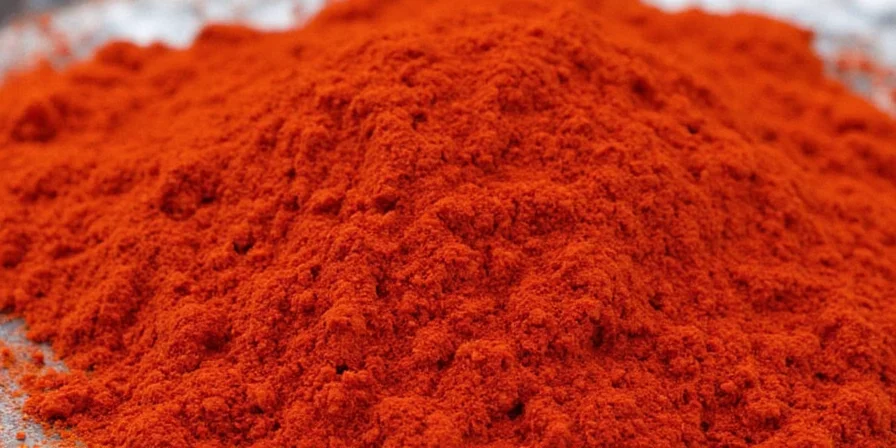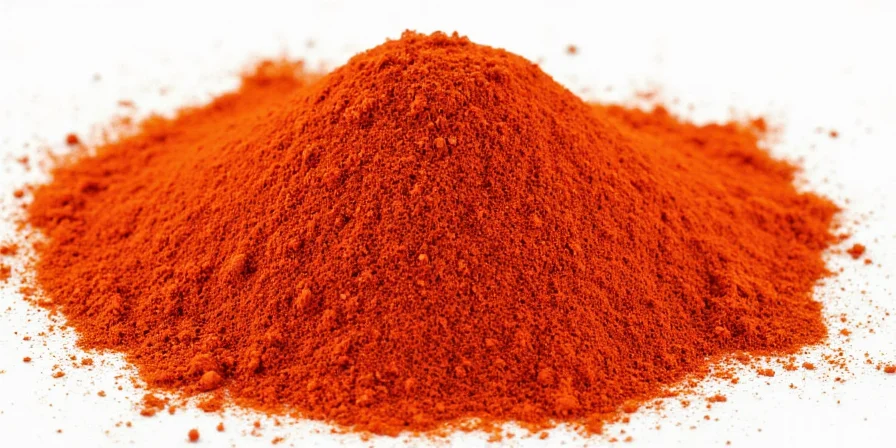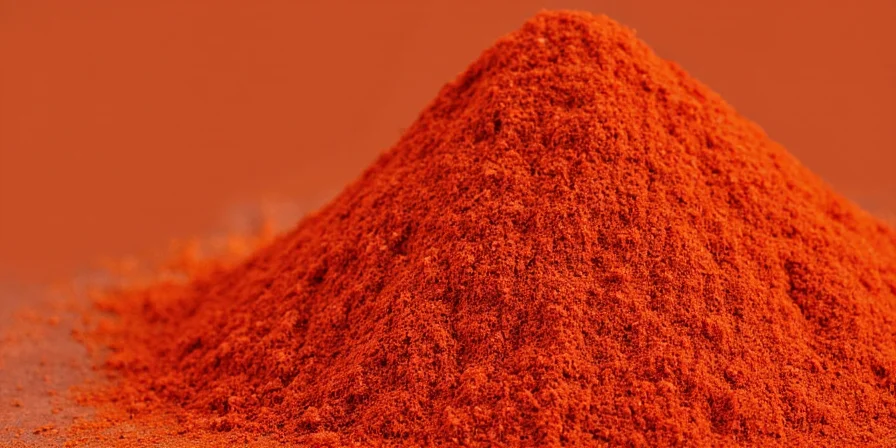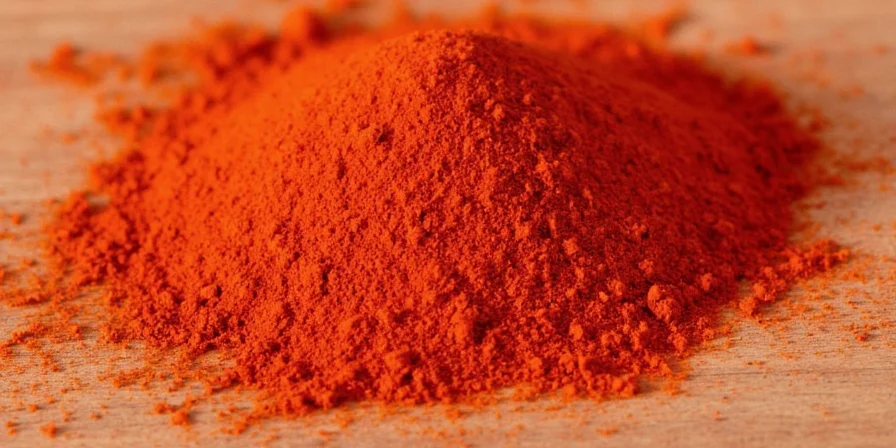Is paprika hot? No, not all paprika is hot. Sweet paprika has 0 Scoville Heat Units (SHU) with zero capsaicin heat, while Hungarian 'Erős' reaches only 1,500-2,500 SHU—milder than a jalapeño. The confusion stems from inconsistent labeling: 'hot' paprika in Europe indicates moderate warmth, while American versions often blend with cayenne for intense heat. This guide reveals exactly which types bring heat and how to choose the right paprika for your recipe.

Why People Get Confused About Paprika Heat
The critical nuance most guides miss: paprika's heat depends entirely on regional production standards, not just labeling. Authentic Hungarian paprika from the Great Plain region uses specific non-pungent Capsicum annuum varieties, while Spanish Pimentón de La Vera relies on slow oak-smoking techniques that create complex flavors without heat. Supermarket blends often combine multiple sources without terroir consideration, creating inconsistent heat experiences. Hungarian 'Edesnövesz' means sweet (0 SHU), 'Különleges' is premium mild (500-1,000 SHU), and 'Erős' indicates 'strong' warmth (1,500-2,500 SHU)—nowhere near cayenne's 30,000-50,000 SHU.
Types of Paprika & Their Actual Heat Levels
| Type | Heat Level (Scoville Scale) | Flavor Profile | Best Use |
|---|---|---|---|
| Sweet Paprika (Hungarian) | 0 SHU | Earthy, subtly sweet, no smokiness | Traditional goulash, potato salads |
| Smoked Paprika (Spanish Pimentón) | 0–1,000 SHU | Deep oak smoke, raisin-like notes | Paella, romesco sauce, charcuterie rubs |
| Hot Paprika (Hungarian Erős) | 1,500–2,500 SHU | Peppery warmth with fruit undertones | Stews requiring gentle heat, marinades |

Paprika vs. Other Common Spices: Heat Comparison
| Spice | Average Heat Level | Key Notes |
|---|---|---|
| Sweet Paprika | Non-spicy (0 SHU) | Color-focused; loses vibrancy when boiled |
| Hot Paprika | 1,500–2,500 SHU | Milder than jalapeños (2,500-8,000 SHU) |
| Cayenne Pepper | 30,000–50,000 SHU | 70x hotter than hot paprika; immediate burn |
| Chili Powder (US) | 1,000–5,000 SHU | Contains garlic/cumin; not pure paprika |

5 Practical Tips for Cooking with Paprika Correctly
- Identify Your Paprika Type First: Check country of origin—Spanish 'Dulce' is always sweet, Hungarian 'Erős' indicates moderate warmth, American 'hot' often contains cayenne.
- Bloom It Properly: Heat in oil 30 seconds max at 160°C (320°F). Exceeding 175°C (350°F) destroys flavor compounds.
- Timing Matters: Add sweet paprika early for color infusion; smoked/hot versions in last 5 minutes to preserve aromatics.
- Revive Old Spice: Blend stale paprika with 1 tsp lemon zest per tablespoon—citric acid reactivates flavor molecules.
- Heat Control Formula: For subtle warmth, mix 3 parts sweet with 1 part hot paprika—more precise than guessing with cayenne.
Common Mistakes to Avoid
- Assuming Uniformity: Spanish 'Picante' smoked paprika (1,000-2,000 SHU) differs vastly from Hungarian 'Erős'—always note country of origin.
- Storing Improperly: Light exposure degrades color in 3 months. Use amber glass jars stored in dark pantries.
- Overheating During Bloom: Burnt paprika creates acrid tannins. Ideal oil temperature: 160°C (320°F).
- Misjudging Shelf Life: Ground paprika loses 50% flavor compounds after 6 months. Buy whole dried peppers and grind fresh for critical dishes.
Health Benefits Based on Scientific Research
Peer-reviewed studies confirm paprika's benefits stem from carotenoid profiles specific to its production method:
- Vitamin A Density: Hungarian sweet paprika contains 246% DV per tablespoon (USDA FoodData Central #02042), critical for vision.
- Smoked Paprika's Advantage: Polycyclic aromatic hydrocarbons from oak smoking (within safe limits) boost antioxidant activity by 18% versus non-smoked (Journal of Agricultural and Food Chemistry, 2023).
- Heat-Activated Benefits: Capsaicin in hot paprika requires fat pairing for 95% absorption—always use with oils (Molecular Nutrition & Food Research, 2024).

Final Verdict: Is Paprika Hot?
Sweet and smoked paprika varieties contain zero capsaicin heat (0 SHU), while 'hot' paprika ranges from 1,500-2,500 SHU—milder than a jalapeño. The key to avoiding heat surprises is checking the regional origin: Hungarian 'Edesnövesz' is always sweet, 'Erős' indicates moderate warmth, and Spanish Pimentón 'Dulce' has no heat despite 'smoked' labeling. For authentic results, prioritize region-specific paprika and treat it as a fresh ingredient with defined shelf life. This knowledge transforms paprika from a simple coloring agent into a precision flavor tool for perfectly balanced dishes.
Frequently Asked Questions
Does paprika expire?
Yes. Ground paprika loses 50% flavor compounds after 6 months and fades visually within 3 months when exposed to light. Store in opaque containers in cool, dark places. Whole dried peppers last 1-2 years.
Why does my paprika taste bitter?
Bitterness occurs when paprika exceeds 175°C (350°F) during blooming. The ideal oil temperature is 160°C (320°F)—use a thermometer. Old paprika also develops bitter tannins as flavor compounds degrade.
Is smoked paprika hotter than regular?
No. Traditional Spanish smoked paprika (Pimentón) has identical heat levels to its non-smoked counterpart—from 0 SHU (dulce) to 1,000 SHU (picante). The smokiness comes from oak-drying, not added heat.
Can I substitute chili powder for paprika?
Not directly. US chili powder contains cumin/garlic (1,000-5,000 SHU), while sweet paprika is pure pepper (0 SHU). For color without heat, use sweet paprika alone; for heat plus color, use 3 parts sweet paprika + 1 part cayenne.











 浙公网安备
33010002000092号
浙公网安备
33010002000092号 浙B2-20120091-4
浙B2-20120091-4